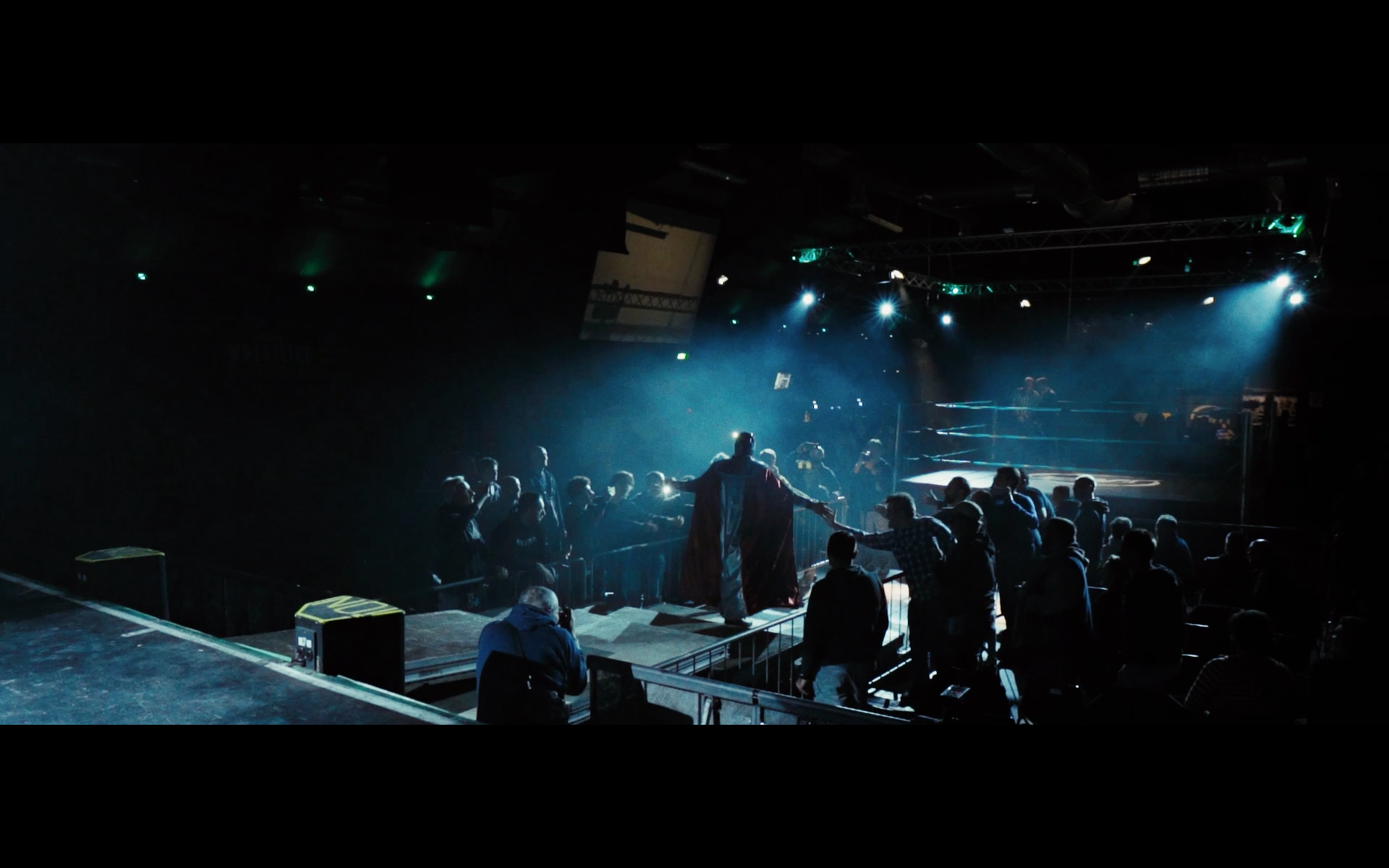Inside the Semi-Pro European Wrestling Scene
Red Scorpion entering the ring in Bologna, Italy
A picturesque mix of former WWE superstars and young “maybe-I’ll-try-this-at-home” athletes are taking over Europe’s most improbable wrestling venues.
It’s 7:30 PM. I’m sitting backstage looking through a narrow gap in the partition wall dividing me from the audience. There can’t possibly be more than a hundred people outside and I’m starting to feel nervous. I’m not here to perform, that’d be crazy, this is a wrestling show and I’m barely over 130 pounds; I’m here to film the event and I’m afraid that if not enough people show up it’ll look awful on camera.
The scenery looks pretty bad too: we’re in a run-down concert venue next to the highway in the outskirts of Bologna; a fine city otherwise, but this is not its brightest spot. It’s my hometown and I am very familiar with this particular club: amongst other occasions, I came here to watch Redman perform a few years back, and even then we couldn’t have been more than 200 people. This place must be cursed, or maybe it’s just me.
I turn around to see Ken Anderson, former WWE United States Champion and Mr. Money in the Bank, warm up for his match against one of the youngest Italian talents of the night. Chris Masters, the Masterpiece, is chatting at the buffet table while Rob Van Dam himself, two times Pro Wrestling Illustrated Most Popular Wrestler and short-lived WWE World Champion, is getting ready in his locker room.
Rob Van Dam after winning his match against Red Scorpion
All I can think about, as I watch these resilient professionals prepare for a night of wrestling, looking back at the meager crowd gathered in a seemingly socially-distanced manner years before Covid-19, is Riggan Thomson opening line from Birdman: “How did we end up here?”
What else could they possibly be thinking? And yet, looking at their expressions and pre-show routines, they don’t seem disappointed or disheartened: they look perfectly fine. It feels like yesterday I was sitting at home, a teenager before social media, staring at the TV screen day and night to follow the spectacle of the Worldwide Wrestling Entertainment, a company so spectacularly flawed it really makes you question your interest. Those times must feel closer to them than they do to me, I keep thinking: it must be hard to go from arenas packed with fans screaming your name — or yelling at you — to an empty warehouse, where twenty to thirty kids are the only ones engaged enough to shout.
Maybe it’s just a job. After all, they’re getting paid — and I can make an educated guess about how much — and they’re still doing what they love the most. Plus, they don’t have to fight every week, they don’t have to train every day, the aroma of marijuana after the show is pungent and the camaraderie gratifying. Sure, the name-recognition must be missed and the pay cut noticeable, but these people are professional athletes performing long after their sell-by-date, in a physically consuming industry that has seen more than a few of its stars pass prematurely.
As I witness the serenity surrounding these multifaceted performers, weighing it against the pressure they must have felt back in their prime, I finally begin to understand their career paths a little more. Much like anyone else pursuing a career in sports, entertainment, or both, they must have craved fame, success, titles, and recognition; they must have craved jam-packed arenas and people chanting their names. However, there comes a time in anyone’s life, perhaps as early as in your 40s if you’re doing what they’re doing, when the stress of delivering to such an audience is no longer bearable, the risk of hurting yourself — or worse — no longer acceptable, and flying cross-country to be hit in the head with a chair no longer appealing.
A makeshift locker room at a county fair show in central Italy
Tonight’s one of the good nights: over the course of last year I have seen former WWE stars perform on makeshift rings at county fairs; I listened as some of them got heckled by children and drunk 30-year-olds. I stared in awe, impressed by their resilience, skills and ability to entertain even the most hostile of crowds, seemingly enjoying the challenge, tapping into a mysterious and endless well of energy within their souls. I gazed at their showmanship with an odd mix of respect and sympathy.
Today, however, and perhaps finally, as Mr. Anderson climbs the stairs, ready to walk in and officially start the show with his signature announcement, I don’t look at his being here as a failure or as a sign of how merciless time is to every one of us. I finally understand that these performers have found a second life in a ruthless industry that, all too often, deprives hard working athletes of their first one. Perhaps, they have simply found what we are all looking for in our more relatable, less flamboyant, office-based struggle: work-life balance.
Mr. Anderson announcing the start of the show at the Estragon club in Bologna
Originally, I just meant to shoot a short documentary focusing on Red Scorpion, a young wrestler from a small town in central Italy. Unable to immerse myself further in the world of semi-professional wrestling during the lockdown, I gathered my memories and wrote this piece to more faithfully reflect what I had seen.
You can still watch the video below.
“A glimpse into the unconventional life of a professional Italian wrestler (Red Scorpion) striving to make a name for himself in the European scene. An intimate look at a young man’s pursuit of the American Dream, juxtaposed with the reality of a small-town upbringing.” Or something like that… This is what we wrote for the festivals we applied to.



